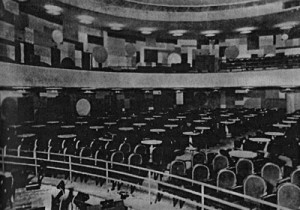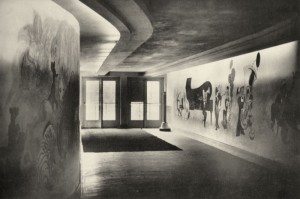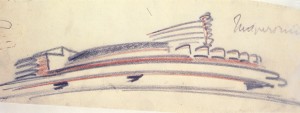

Kadeko
The most successful cabaret of the later Weimar years was the Kabarett der Komiker or Kadeko (Cabaret of Comedians).

It was established on December 1st 1924 by Paul Morgan, Kurt Robitschek and actor/singer Max Hansen at a venue called Rakete (the Rocket) in Berlins’ Kantstraße. The venture was immediately successful and a year later moved to the 450 seat Theater am Kurfürstendamm. By 1928, a new venue was needed and Kadeko moved into the brand new cabaret theatre of the ‘WOGA’ complex in Lehniner Platz. A 950 seat venue designed by the famous modernist architect Erich Mendelsohn.
Never known to shy away from political satire and parody, the Kadeko played host to some of the sharpest and wittiest Conferenciers of the day, most regularly Paul Nikolaus.

An early production of a mock operetta by Morgan and Robitschek called Quo Vardis, parodied not only the film of that name but also Hitler’s early attempts at power. It ran for over 300 performances.
By 1929, the necessity to fill over 900 seats every night caused Robitschek to adopt a more cautious approach. The bulk of political jokes remained the role of the conferencier , but the rest of the show was made up of songs, vaudeville acts and comic one-act plays.
The inexorable rise of the Nazis, and the now ever-present threat of street violence had a dramatic effect on the Kadeko, as patrons became afraid to venture out, especially onto the Kurfürstendamm.

In 1931 Robitschek reported “The box office has become a seismograph of political earthquakes” and in 1933, he fled Germany for the United States.
The Kadeko was taken over by Hanns Shindler and remained a successful, if ‘Aryanized’ cabaret under the watchful eye of the Nazi regime, eventually being taken over by Willi Schaeffers in 1938, until the eventual closing of all theatres in 1944.

The building was destroyed by bombing shortly before the end of the war, and is now the site of the Schaubühne am Lehniner Platz.
